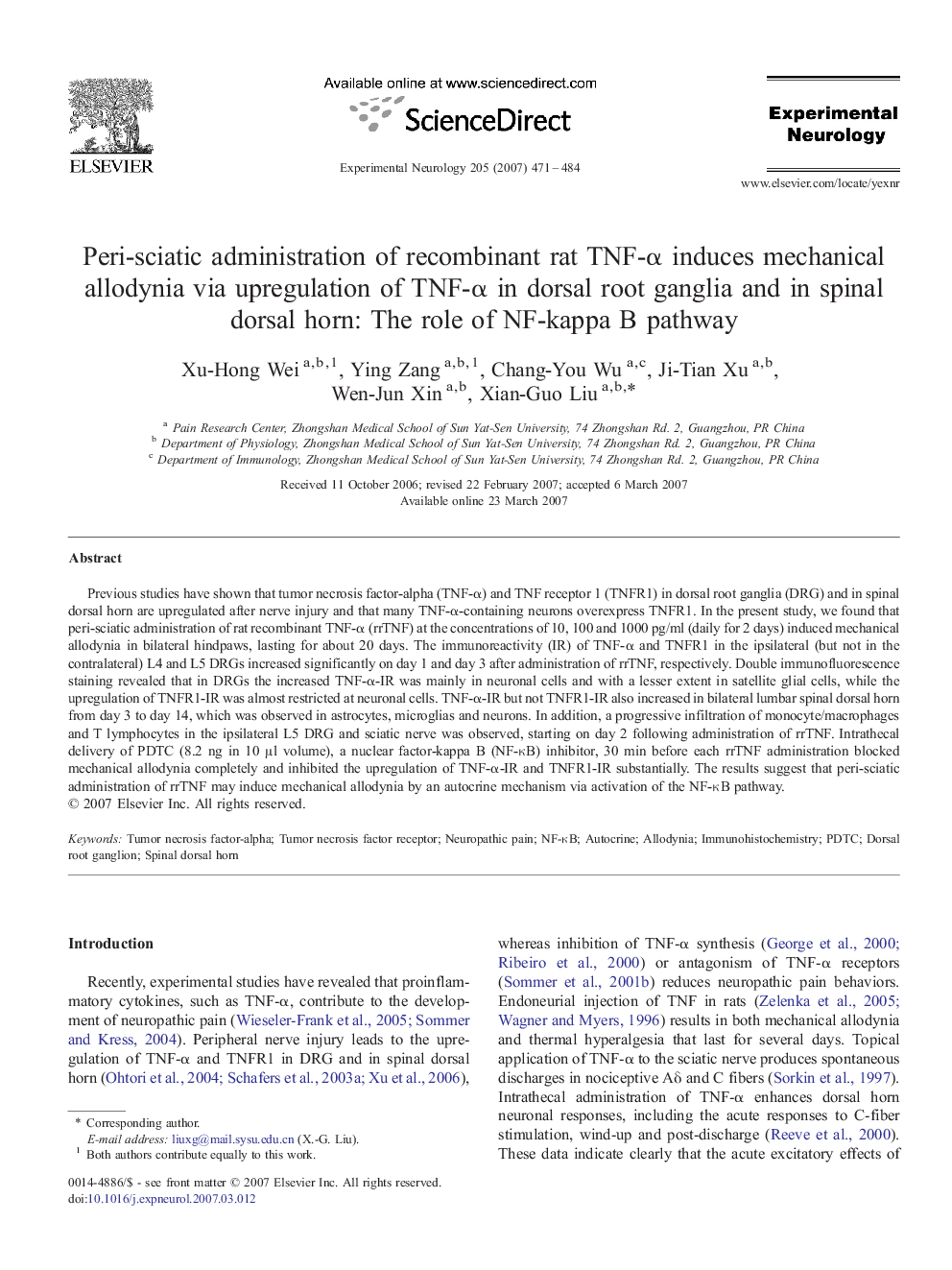| Article ID | Journal | Published Year | Pages | File Type |
|---|---|---|---|---|
| 3057048 | Experimental Neurology | 2007 | 14 Pages |
Previous studies have shown that tumor necrosis factor-alpha (TNF-α) and TNF receptor 1 (TNFR1) in dorsal root ganglia (DRG) and in spinal dorsal horn are upregulated after nerve injury and that many TNF-α-containing neurons overexpress TNFR1. In the present study, we found that peri-sciatic administration of rat recombinant TNF-α (rrTNF) at the concentrations of 10, 100 and 1000 pg/ml (daily for 2 days) induced mechanical allodynia in bilateral hindpaws, lasting for about 20 days. The immunoreactivity (IR) of TNF-α and TNFR1 in the ipsilateral (but not in the contralateral) L4 and L5 DRGs increased significantly on day 1 and day 3 after administration of rrTNF, respectively. Double immunofluorescence staining revealed that in DRGs the increased TNF-α-IR was mainly in neuronal cells and with a lesser extent in satellite glial cells, while the upregulation of TNFR1-IR was almost restricted at neuronal cells. TNF-α-IR but not TNFR1-IR also increased in bilateral lumbar spinal dorsal horn from day 3 to day 14, which was observed in astrocytes, microglias and neurons. In addition, a progressive infiltration of monocyte/macrophages and T lymphocytes in the ipsilateral L5 DRG and sciatic nerve was observed, starting on day 2 following administration of rrTNF. Intrathecal delivery of PDTC (8.2 ng in 10 μl volume), a nuclear factor-kappa B (NF-κB) inhibitor, 30 min before each rrTNF administration blocked mechanical allodynia completely and inhibited the upregulation of TNF-α-IR and TNFR1-IR substantially. The results suggest that peri-sciatic administration of rrTNF may induce mechanical allodynia by an autocrine mechanism via activation of the NF-κB pathway.
